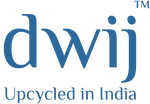In a world that is becoming more aware of the impact it has on the environment, words like upcycling or recycle are often used interchangeably. It is important to know the difference between upcycling and recycling in order to make sustainable decisions. This guide is for the people who are interested in sustainability and conscious consumption. This guide will explain the differences between recycling and upcycling.
1. Definition and Process
Recycling is the breakdown of waste materials to create new raw materials. Plastic bottles are melted down and reshaped into new products.
Upcycling involves the creative reuse of waste without destroying it. Old jeans can be turned into a Upcycled bag, a toy, or stylish accessory while maintaining most of their original shape.
2. Energy Consumption
The energy consumption is a key factor in the debate between upcycling and recycling. Recycling requires more energy than upcycling because the materials need to be heated. Think about the chemicals and equipment needed to melt plastic or glass.
Upcycling consumes far less energy. Dwij creates products using manual or low-energy methods. This method is eco-friendly.
3. Value Addition
Upcycling increases the value of an item by transforming it into something artistic or useful. A denim jacket can be turned into a patchwork tote.
Recycling, by contrast, often results in downcycling — where the new material is of lower quality than the original.
4. Creative Expression
Upcycling encourages creativity, design, and craftsmanship. Each upcycled item has its own unique story.
Recycling is an industrial, mechanical process that doesn't allow much for creativity or personalization.
5. End product Quality
During the recycling process, recycled materials can lose some of their original durability and appearance. Recycled paper is, for instance, usually of lower quality than virgin paper.
Upcycled denim, for example, retains its original integrity and is stronger than new.
6. Environmental Impact
Recycling is better than landfilling but still generates waste and emissions. Upcycling takes it a step further by extending the lifespan of existing materials without creating more waste.
7. Circular Economy Role
Both upcycling and recycling support a system of circular economy, but the upcycling is more direct as it extends the life cycle of a product's original form.
Direct reuse reduces raw materials consumption, supports local economies and conserves resources.
8. Material Degradation
Recycling many materials can weaken their structure. After multiple reuses, plastic degrades and paper fibres get shorter.
Upcycling can help to avoid this problem. Dwij preserves the fabric integrity when transforming denim into felt.
9. Infrastructure Requirement
In order to collect, sort, and process recyclables, a complex infrastructure in a municipal or industrial setting is needed.
Upcycling avoids this problem. At Dwij, we maintain fabric integrity by preserving the strength of denim and PET felt during transformation.
10. Economic Impact
Recycling is often controlled and dominated by large corporations that have centralized systems.
Upcycling is a powerful tool for small businesses and conscious brands. Dwij, for example, creates jobs and promotes ethics while providing high-quality upcycled products.
Understanding the differences is important
By choosing upcycled denim over recycled, you are helping the environment and making a positive social impact. Upcycled denim products are durable, hygienic and well-designed. They're not only eco-friendly but also hygienic. You need to know your options when it comes to the growing industry of sustainable fashion.
Final Thoughts
Understanding each other's limitations and roles is more important than choosing one. Upcycling can be a creative, holistic way to reduce your waste. Recycling is a good option, but not the only one.
Dwij embraces upcycling as more than a technique. It is a way of thinking. Our mission is to create upcycled items that are functional, stylish, and durable.
FAQs
1. What is the main difference in upcycling vs recycling?
Upcycling involves reusing items creatively without breaking them down, while recycling requires processing materials to produce raw inputs for new products.
2. Are upcycled products more sustainable than recycled ones?
Generally, yes. Upcycled products use less energy and water, and they avoid the chemical processes involved in recycling.
3. What kind of items can be upcycled?
Clothing, furniture, packaging, and home décor are commonly upcycled. At Dwij, we specialize in upcycled denim products and upcycled accessories.
4. Do upcycled accessories compromise on style or quality?
Not at all. They often stand out for their uniqueness, craftsmanship, and durability.
5. Can upcycling be done at home?
Yes! From turning old clothes into quilts to repurposing jars as planters, upcycling is a great DIY activity that reduces waste.





